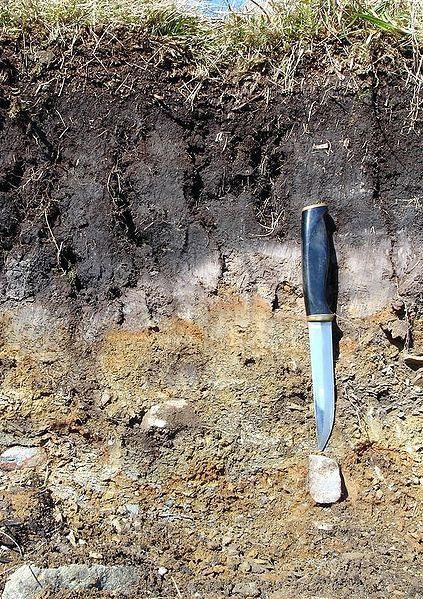Soils provide many important functions for plants, animals and humans. The most obvious is their function as a habitat for plants and trees in the wild, on agricultural land and in our gardens. Furthermore, soils are very important as a habitat for the teeming millions of soil organisms and function as a highly important filter removing pollution from our drinking water and helping to regulate the flow of water through the landscape. Soil organic matter is one of the major pools of carbon in the biosphere and is important as both a driver of climatic change and a response variable to climate change, capable of acting as a source as well as a sink of carbon. Soils also help regulating other greenhouse gases such as nitrous oxide and methane.
Soils and water
Much of the earth's rain and snow falls on the soil’s surface. The physical and chemical properties of the soil are very important in determining the fate of this precipitation. Depending on the type of soil, some of the precipitation will flow over the surface of the soil. A larger amount will enter the soil where it is held back for a period of time, and some of it passes straight on through the soil to the groundwater, rivers, lakes and eventually, to the oceans. The time water remains in the soil is crucial agriculture and food production, for plant growth in general and for several organisms living in the soil.
All soils have a soil water regime. This regime is dependent on the water holding capacity of the soil, the demands of moisture required by plants and animals as well as the availability of the soil water to them. Water entering the soil is held back with different degrees of strength depending on the texture of the soil, i.e. whether the soil is clayey, loamy or sandy and the structure of the soil, i.e. the network of pore space.
After heavy rainfall, soils are usually very wet and water is held back in the soil at what is known as field capacity. The field capacity of a soil is the maximum amount of water that a particular soil can hold back against gravity. If there is no rainfall for some time, the soil will dry out and may reach the permanent wilting point (PWP) when plants will begin to wilt because of the lack of moisture. This situation is a feature of many soils in low rainfall and drought situations. The amount of water and the tenacity with which it is held back in the soil is a very important factor of a soil’s properties and what it can be used for.
(Soil-Net 2016a)
